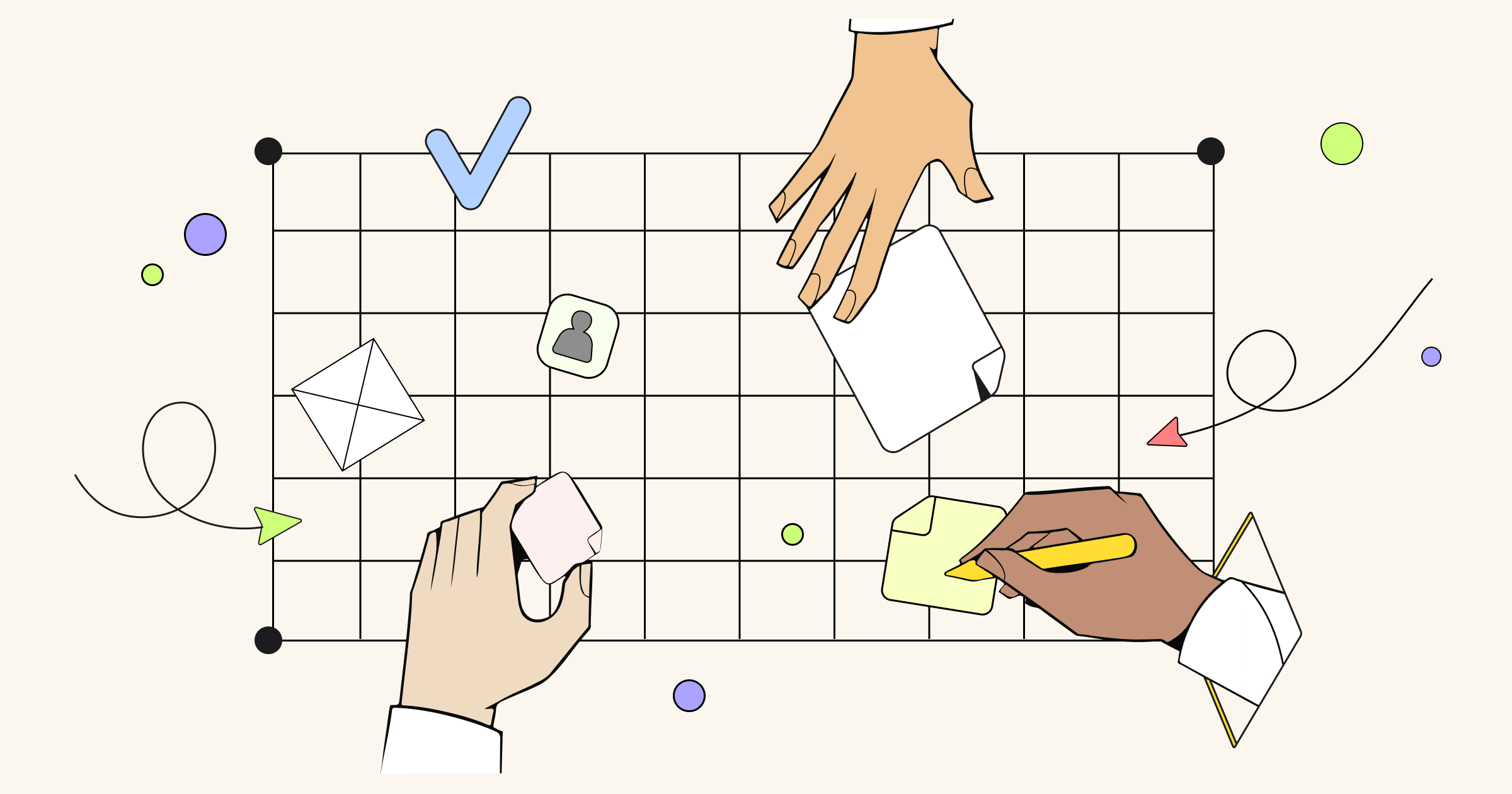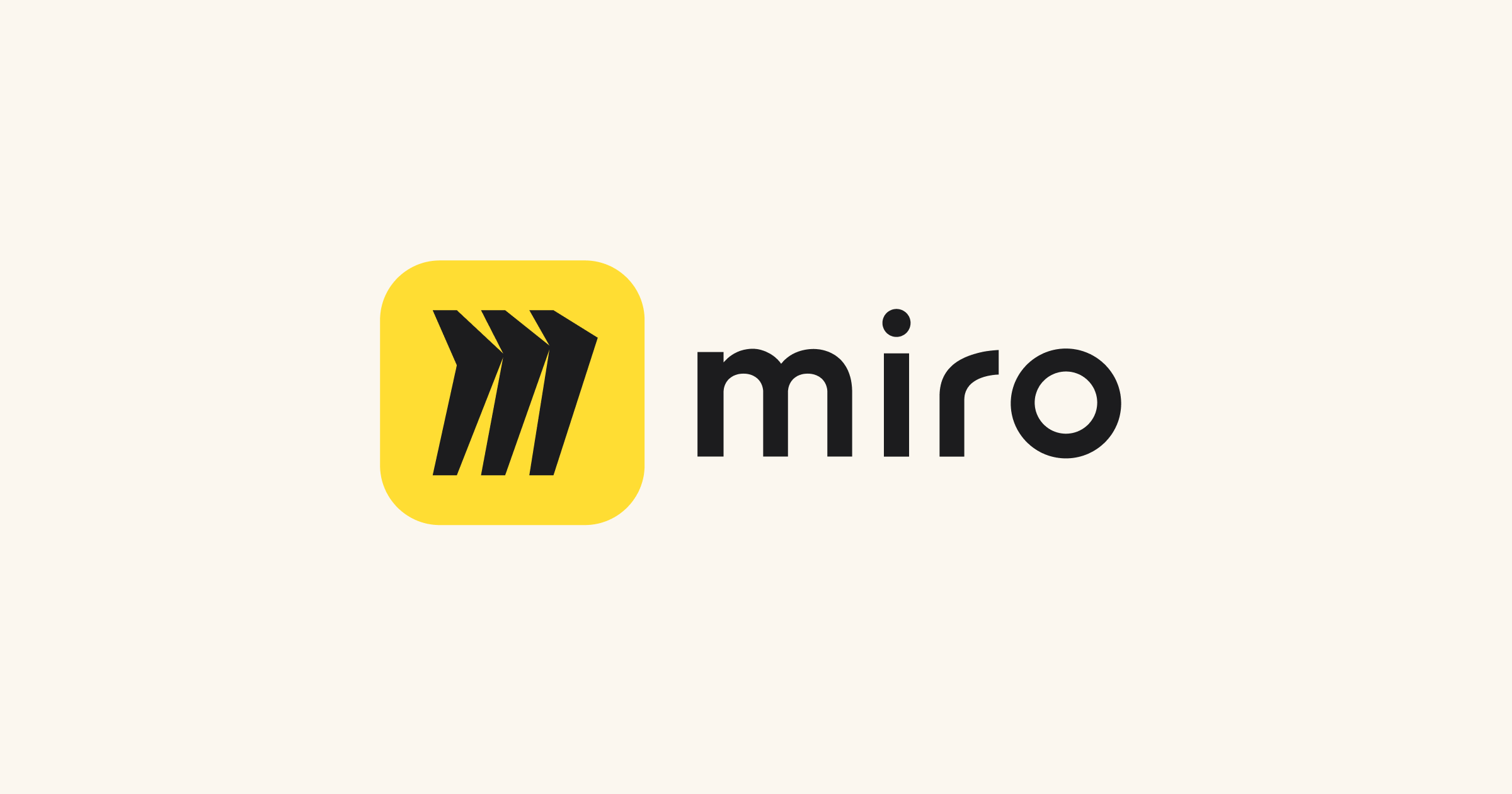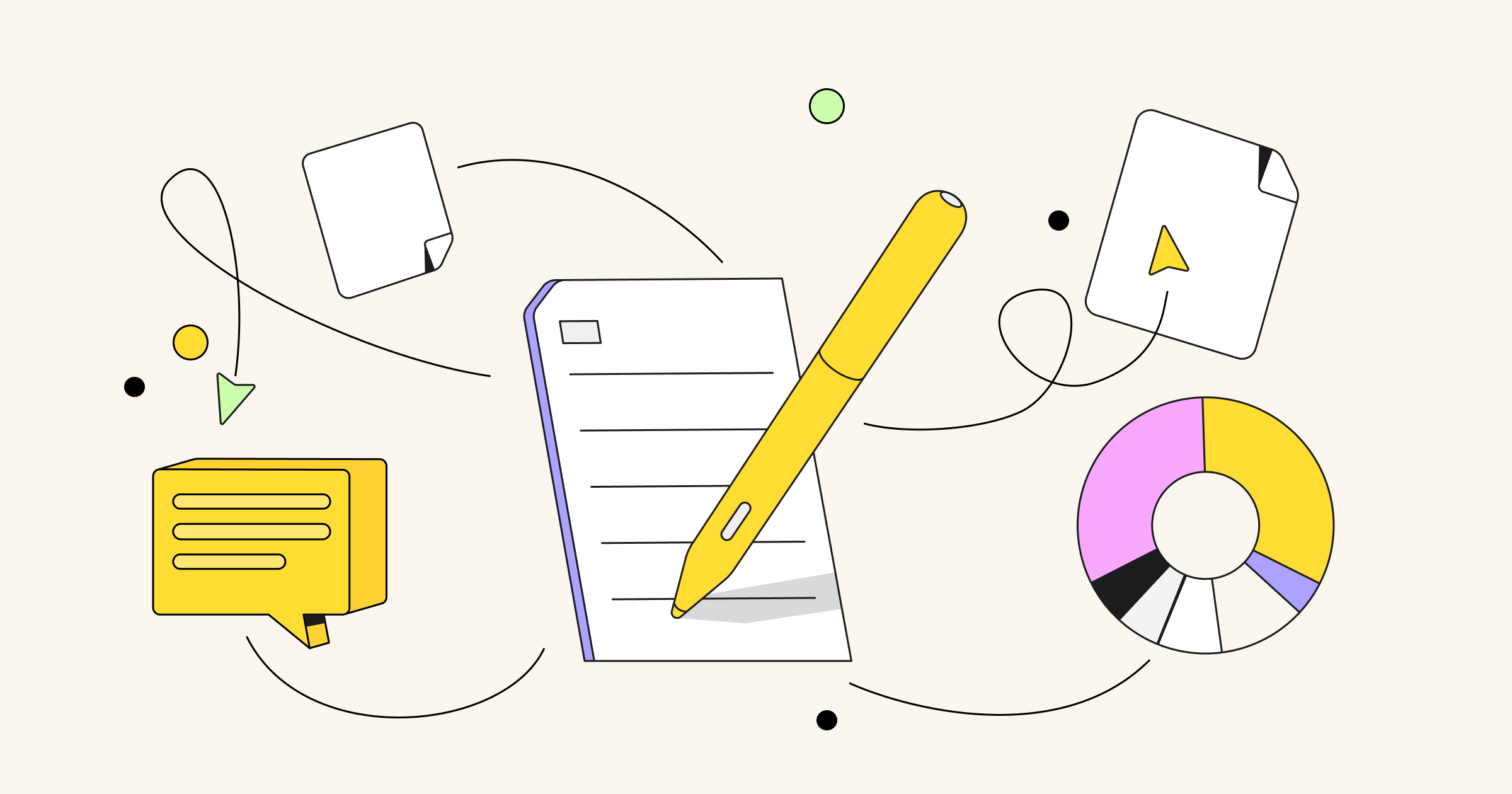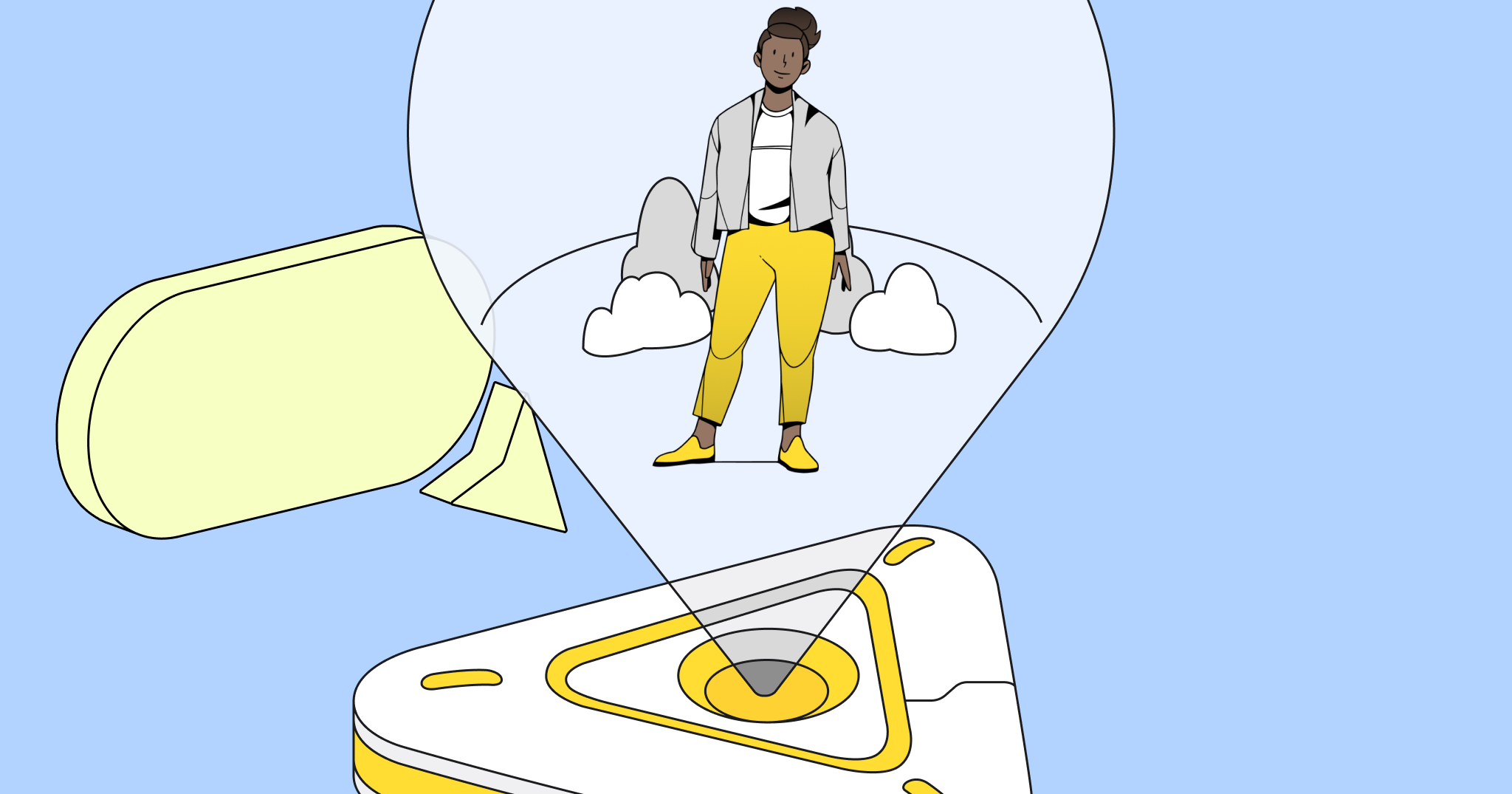A career that’s exciting and motivating is a dream, and I’m grateful that my job is so dope. I get to build a program to help folks who use Miro visualize their own interesting ideas. I’m fulfilled speaking with customers and understanding how we might serve them better to work with their teams more effectively.
Yet, I still catch myself asking bigger questions about how my work contributes to creating a better world. So when the opportunity presented itself at a recent hackathon, I jumped on an idea to highlight the positive environmental impact of choosing to collaborate digitally in Miro, rather than using physical pen and paper.
Where cloud technology meets the environment
At Miro’s recent company offsite, we dedicated two days to run a hackathon geared at creating shippable prototypes to solve some hairy problems. Anyone within the organization could form a team with people we didn’t normally work with.
Aha! It occured to me that the hackathon provided a chance to use some of the most talented minds at the company to think about how we might contribute to a larger global issue, while leveraging our product, which reaches millions of users across the globe.
[rtb_inline_subscription id=”1″ size=”small” header=”Subscribe to learn more about remote collaboration” button=”black”]
Our diverse team assembled quickly and got to work. Since we’re a software company, we figured the most logical place to begin this initiative was in our product. Here’s what we did:
- Looked at out how many trees are required to produce the weight of a standard size pad of sticky notes.
- Figured out how many individual sticky notes are included in a single pad, allowing us to extrapolate the weight per unit.
- Calculated the number of physical sticky notes users would have gone through in a year, if they hadn’t taken advantage of Miro’s digital stickies.
Our process wasn’t perfect, but with a short turnaround we were able to get a ballpark number.
We found that in the past year, Miro users created over 70 MILLION digital sticky notes. To translate that into the physical world, it takes approximately one tree to produce 70,000 paper sticky notes. That means that in just one year, Miro users have collectively saved over 1,100 trees – just by digitally collaborating with their teams.
This can have an even more profound impact over time, as 50% of the U.S. workforce will be remote by 2020, resulting in a greater need for remote-friendly collaboration tools – and, consequently, more trees saved.
Once we understood the numbers, we brainstormed ways to bring more awareness to the positive environmental effects of digital collaboration. It’s incredible how something as small as an individual sticky note can have a massive impact when aggregated across multiple projects, teams, organizations, and countries.
Converting stickies to trees
That day, we dug a hole and started the dirty work: we planted a tree to celebrate the beginning of an ambitious initiative. As an organization, we’re committed to commemorating the positive influence that online collaboration has on the environment.
We’re now working on a company-wide project to plant one tree in each of our four hubs every time the 70,000 sticky note milestone is reached by Miro users. We also built a prototype for customers to track their team’s impact within Miro itself: on the dashboard and through a progress bar.
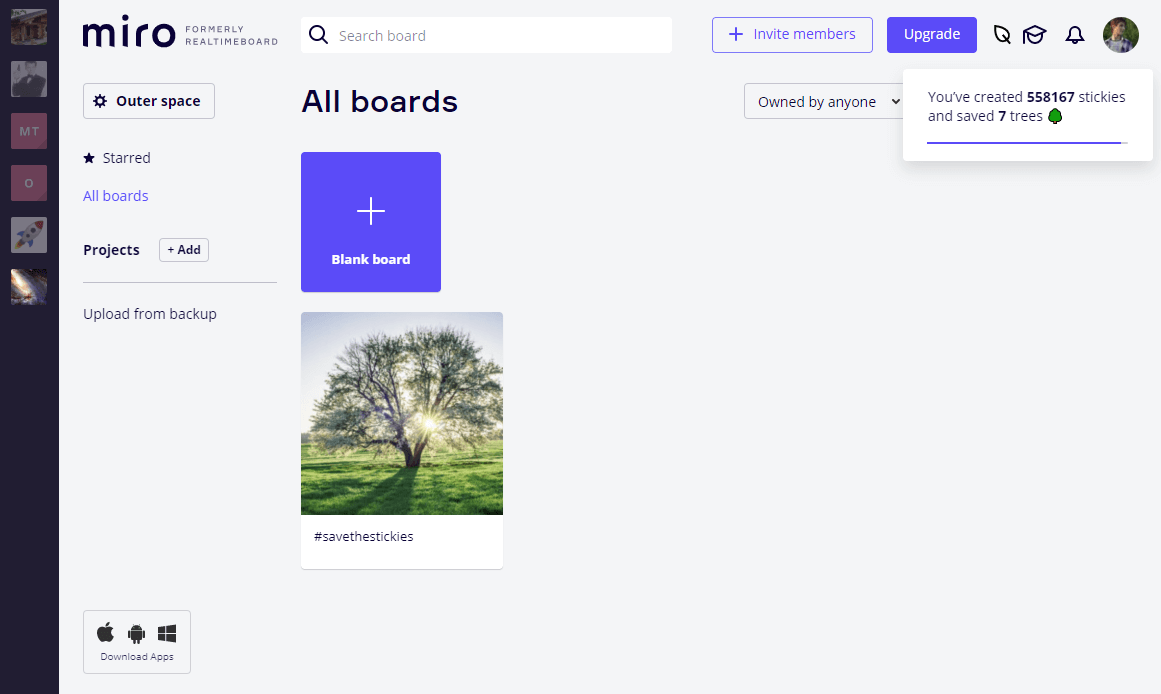
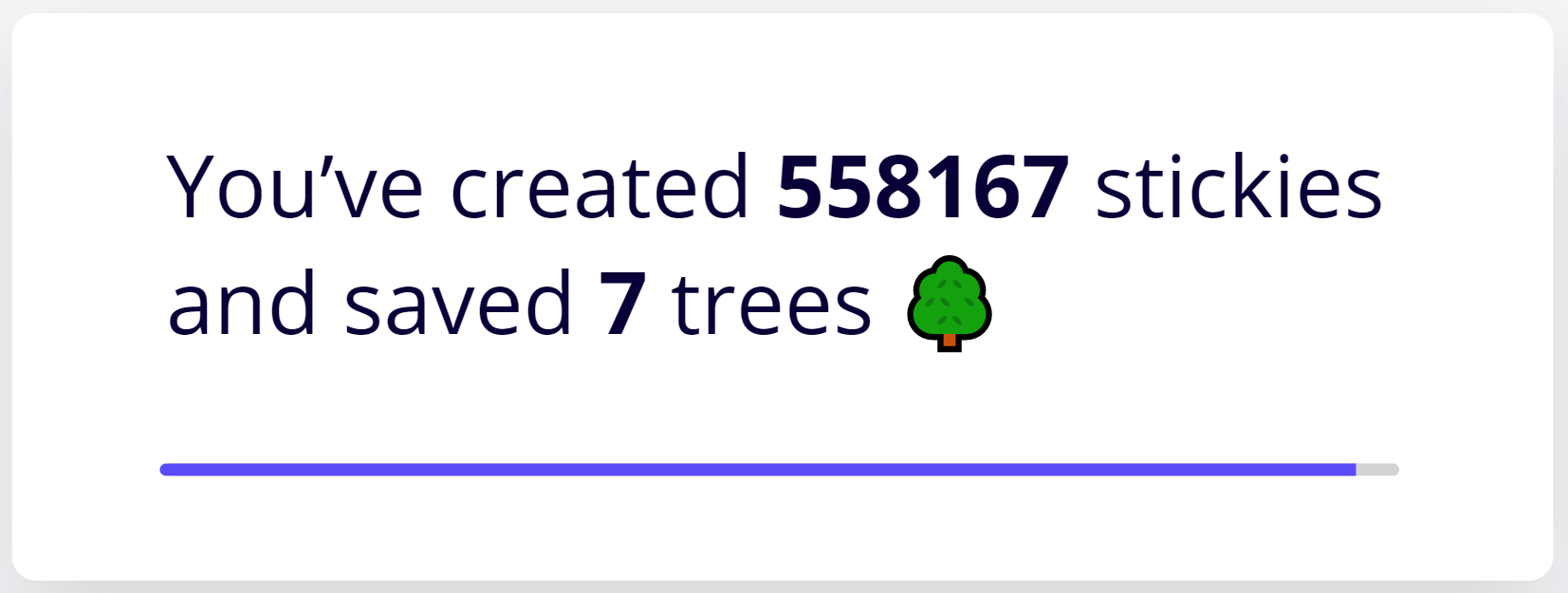
There’s still some work to be done to refine the project and create the huge impact we’re looking for, but it’s inspiring to see how a passionate and talented team brought a simple idea to life in only two days.
Miro’s digital sticky notes are perfect for brainstorming, retrospectives, affinity mapping, and lots more when working with distributed teams. They reduce the costs of physical assets, allow remote teams to work just as if they’re in the same room, are saved forever in the cloud, and have profound productivity benefits.
Looking for a tool for remote brainstorming?
Try Miro free

While we might not ever let go of physical sticky notes altogether, it’s clear that reducing our reliance on them can make a real difference.

